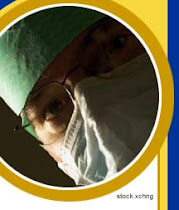Recommended books for Year 4 Medics :
It's not compulsory to buy all-listed books!
Medicine is about grasping the whole world...
Recommended books for Year 4 Medics :
Alhamdulillah, I already passed my medicine exam today and I feel so 'free' to study for my next postings exam in Neurology and O&G. Today's morning as usual with exam syndrome - NV!
The MMA made the call a few years back and then the DG was quoted to say:
…the policy of requiring doctors to wear their white coats, shirts and neckties would not change unless there was a “body of evidence” which proved that neckties caused infections to spread. It is a long established policy that we have had since Merdeka. Doctors must maintain their dignity and dress properly,” he said.
We discovered that more than half (52%) of neckties worn by doctors were contaminated with Staphylococcus and out of these, 62% of them were identified as MRSA. In contrast, none of the student’s ties were contaminated with MRSA. Due to the high prevalence of staphylococcus detected on doctors’ neckties, we recommend that health care workers do not wear neckties.
Syllabus Year 4 Phase 2 (Surgical Diseases)
Syllibus Year 4 Phase II (Surgical Diseases)
NB!STRANGULATION - Needs IMMEDIATE SURGERY!OBTURATION - You have 4 HOURS to OPERATE!
A 45-year-old woman presents to the emergency department with bleeding gums and bruises on both forearms for the last 2 days. For the preceding 10 days she had been experiencing a high fever (which has since broken) and rigors. In addition, she complains of a rash over both forearms, but she is unable to further characterize it. She noted severe pain in both legs during the febrile portion of her illness. There was no history of hematuria, melena, cough, or hemoptysis. She is not taking any routine prescription medications or using over-the-counter products or supplements. She has no known drug allergies. She is married with 5 children and is currently unemployed. She does not smoke or drink alcohol and has no history of drug abuse. There is no travel history or any history of sick contacts. She is a resident of Pakistan. On physical examination, she is alert and apparently well developed and well nourished. The patient has a regular pulse of 90 bpm and a respiratory rate of 14 breaths/min. Her temperature is 98.2° F (36.8° C) and blood pressure is 110/70 mm Hg. The cardiac examination reveals a normal S1 and S2, with no murmur, gallop, or rub. Auscultation of the lungs is normal, and no palpable organomegaly or tenderness is found on abdominal examination. Examination of the extremities reveals large bruises and a petechial rash across both forearms and lower extremities (Figure 1; the image shown is an example of the rash seen). Conjunctival hemorrhages are noted bilaterally. Bruises are also apparent on her soft palate, and minor trauma from oral examination results in gingival hemorrhage. The laboratory investigation reveals a hemoglobin of 8 g/dL (80 g/L), platelet count of 11 × 103/µL (11 × 109/L), and a white blood cell count of 1.8 × 103/µL (1.8 × 109/L). Her serum blood urea nitrogen, creatinine, liver function tests, albumin, and electrolytes are normal. Coagulation studies, including a prothrombin time, activated partial thromboplastin time, fibrin degradation products, and serum fibrinogen, are normal. Blood cultures do not show any growth. Urine analysis and urine culture result negative. Posteroanterior and lateral chest radiographs, as well as abdominal ultrasonography, are unrevealing.
Hint: Bruises, conjunctival hemorrhages, and depressed cell lines in a postfebrile patient with a rash.
